Automated financial spreading services transform commercial lending by accelerating underwriting, reducing costs, improving accuracy, and strengthening risk management—enabling banks and financial institutions to make faster, more informed credit decisions while optimizing resources.
In the intricate world of commercial lending, precision, speed, and foresight are not just desirable – they are critical for success. Financial institutions are under increasing pressure to make faster, data-driven credit decisions while managing growing risk and compliance demands. At the center of this effort is financial spreading—a process that’s historically manual but now ripe for intelligent automation.
Financial spreading services have emerged as a pivotal innovation, moving beyond mere technical upgrades to become a cornerstone of modern lending. These services empower institutions to make faster, more accurate, and more strategic decisions.
What is Financial Spreading?
Financial spreading is fundamentally the systematic process by which a bank transfers and organizes information from a borrower’s financial statements—including balance sheets, income statements, and cash flow statements—into the bank’s proprietary financial analysis program or spreadsheet. This critical step involves extracting raw line items and standardizing data into a uniform format, preparing it for rigorous analysis.
The core objective of financial spreading is to provide credit analysts with a comprehensive and granular view of a borrower’s current and prospective financial state. This detailed perspective is essential for making informed decisions regarding lending, investment, and other financial services.
Key reports generated from this process include:
- Common size balance sheets
- Common size income statements
- Financial ratios
- Statements of cash flow
- Reconciliation of net worth
- Revenue and growth trends
- Cost of Goods Sold (COGS)
- Operating expenses
- Profit margins
- Various cash flow indicators
It is important to recognize that while much financial information is processed in accordance with Generally Accepted Accounting Principles (GAAP), banks often apply specific internal adjustments.
Commercial Lending Workflow Challenges and Opportunities
The commercial lending process is a structured sequence of steps, meticulously designed to evaluate a company’s financial health, assess associated risks, and determine appropriate loan terms. This workflow typically encompasses several key stages:
- Application Submission
The process begins with the borrower submitting a comprehensive application, including personal and financial information, credit history, and a clear statement of the loan’s purpose.9 - Documentation Verification
Lenders then rigorously scrutinize various documents, such as income statements, bank statements, and tax returns, to ensure their authenticity and accuracy. - Credit Evaluation
Following verification, an in-depth analysis of the borrower’s creditworthiness is conducted, examining factors like credit score, payment history, outstanding debts, and existing loans to determine the inherent risk. - Loan Underwriting
This is a critical stage where underwriters meticulously review the borrower’s financial profile, credit history, collateral (if applicable), and the proposed loan’s amount, interest rates, and repayment terms. This involves an extensive risk assessment, considering market conditions and industry-specific risks. - Loan Approval and Disbursement
Upon successful underwriting, the loan terms and conditions are finalized, a commitment letter is issued, and funds are disbursed to the borrower. - Loan Servicing
The final stage involves the ongoing management of the lender-borrower relationship, including monitoring repayments, addressing inquiries, and ensuring continuous compliance with all legal and regulatory requirements.
Despite the structured nature of this process, traditional financial spreading methods have historically presented significant pain points for financial institutions:
| Challenge | Impact |
|---|---|
| Manual, resource-intensive, and error-prone | High risk of human error and rework due to hand-keyed entries, leading to delays and operational inefficiencies. |
| Significant delays and bottlenecks | Manual paperwork, identity verification, and data entry cause slowdowns. Borrowers may take 20–30 business days to close books, delaying decision timelines. |
| Data inconsistency and lack of standardization | Inconsistent formats and analyst-specific judgment result in non-uniform assessments, reducing confidence in credit decisions. |
| Limited granularity and static insights | Traditional methods provide a historical snapshot but fail to track custom covenants or detect early risk signals like rising DSO. |
| Slow turnaround times | Prolonged processing leads to poor borrower experience and potential application abandonment. |
| Non-standard document formats | Financials arrive in unstructured layouts, requiring manual normalization for system ingestion. |
| Prohibitively expensive monitoring | Cash flow–based lending requires frequent reviews. Manual updates make this approach unsustainable at scale. |
| Analyst subjectivity | Risk of bias and inconsistency when financial categorizations depend solely on individual interpretation. |
| Weak audit trails and compliance gaps | Limited traceability in manual systems makes internal audits and regulatory reporting more difficult. |
A critical consequence of these traditional challenges is the hidden cost associated with outdated data. The manual process is often so slow that by the time financial numbers are accurately compiled and reconciled, they are already historical. This means that lending decisions are frequently based on stale information, significantly increasing unseen risk.
This directly compromises the accuracy of risk assessments, potentially leading to mispriced credit or the failure to detect early warning signals.
This represents a fundamental flaw in risk management. In today’s competitive landscape, which demands real-time insights, banks that continue to rely on manual spreading risk losing market share to agile non-bank lenders who have embraced faster, data-driven approaches.
Transforming Lending – The Core Enhancements of Financial Spreading Services
Modern financial spreading services, particularly those leveraging automation and advanced analytics, directly address the aforementioned pain points of traditional workflows, delivering multifaceted benefits to commercial lenders.
a. Boosting Efficiency and Speed
Automated financial spreading significantly accelerates the loan origination process by drastically reducing the time required for data entry, document handling, and approval workflows. This enhanced speed directly translates into increased throughput, enabling financial institutions to process a higher volume of loans in less time and improving overall operational efficiency.
b. Ensuring Accuracy and Mitigating Risk
Automated systems minimize human errors in data entry and processing, providing a more accurate and reliable picture of a company’s finances and significantly reducing the risk of incorrect analysis. AI-driven algorithms are particularly adept at identifying inconsistencies that manual processes might overlook. Automated spreading also ensures –
- Uniformly classified and formatted financial data
- Accurate calculations and meaningful comparisons across multiple companies and over time.
- Reduction in bias and ensures fair and objective credit assessments
c. Driving Deeper Insights and Strategic Decisions
Financial spreading allows banks to gain detailed information about their borrower’s financial position and creditworthiness, enabling a thorough evaluation of business performance over time. It provides essential insight into a business’s short-term and long-term performance, helping identify critical patterns in sales, expenses, and cash flow.
d. Strengthening Regulatory Compliance
Automation significantly aids institutions in adhering to regulatory standards by integrating compliance checks directly into the loan processing workflow, thereby reducing the risk of non-compliance and associated penalties.16 By standardizing financial data and reporting, automated systems facilitate regulatory compliance and make audits considerably less burdensome. Every action performed and every version of the data is meticulously logged, ensuring transparency and accountability throughout the process.8
e. Enhancing Customer Experience and Competitive Edge
In a market where customer experience has become a paramount differentiator, faster, more efficient, and transparent lending processes provide a substantial competitive advantage.
Quicker loan processing times and more transparent communication fundamentally enhance the customer experience. Borrowers directly benefit from faster decisions and a smoother application process, which significantly increases their satisfaction and loyalty to the institution.
Research by McKinsey indicates that banks excelling in customer satisfaction also demonstrate superior monetary performance. Furthermore, automated systems can easily scale to handle increasing loan volumes without a proportional increase in staffing levels, making it easier for institutions to grow their loan portfolios and expand their market reach.
Manual vs. Automated Financial Spreading in Commercial Lending
| Aspect | Manual Financial Spreading | Automated Financial Spreading |
| Data Extraction | Tedious, hand-keying, prone to errors | AI/OCR-powered, fast, high accuracy |
| Data Standardization | Inconsistent, analyst-dependent | Uniform formats, consistent categorization |
| Processing Speed | Hours to days per borrower, significant delays | Minutes per borrower, real-time insights |
| Accuracy | High human error rate, inconsistencies | Minimized errors, AI-driven validation |
| Risk Assessment | Based on outdated data, limited granularity | Proactive, predictive, comprehensive |
| Compliance | Manual checks, higher risk of non-compliance | Integrated checks, audit-ready reporting |
| Resource Allocation | Analysts focused on data entry/reconciliation | Analysts focused on strategic analysis, client relations |
| Scalability | Limited, requires increased headcount for volume | Highly scalable, handles increased loan volumes |
| Customer Experience | Slow decisions, potential abandonment | Faster decisions, smoother process, higher satisfaction |
| Competitive Advantage | Reactive, falling behind agile competitors | Proactive, market leadership, revenue growth |
Conclusion
Financial spreading services—especially those infused with automation and emerging technologies, such as artificial intelligence and machine learning—are no longer optional. They are a strategic imperative for today’s commercial lenders.
At Anaptyss, we partner with financial institutions to modernize and scale their operations through intelligent, automation-led solutions. Financial spreading is one of the most critical components in commercial lending workflows. Manual, resource-heavy processes are no longer viable in an environment that demands accuracy, speed, and agility
Our experience working with financial institutions has shown that automated financial spreading directly addresses the bottlenecks, inaccuracies, and limitations of manual workflows. By enabling faster processing, reducing the risk of human error, enhancing data quality, and unlocking richer financial insights, these solutions elevate both operational efficiency and decision-making accuracy.
Transform Your Lending with Anaptyss
If you’re ready to reimagine your commercial lending workflows—streamline financial spreading, enhance risk insights, and scale with confidence—Anaptyss is here to help.
Email us today at info@anaptyss.com to arrange a consultation with our team.



